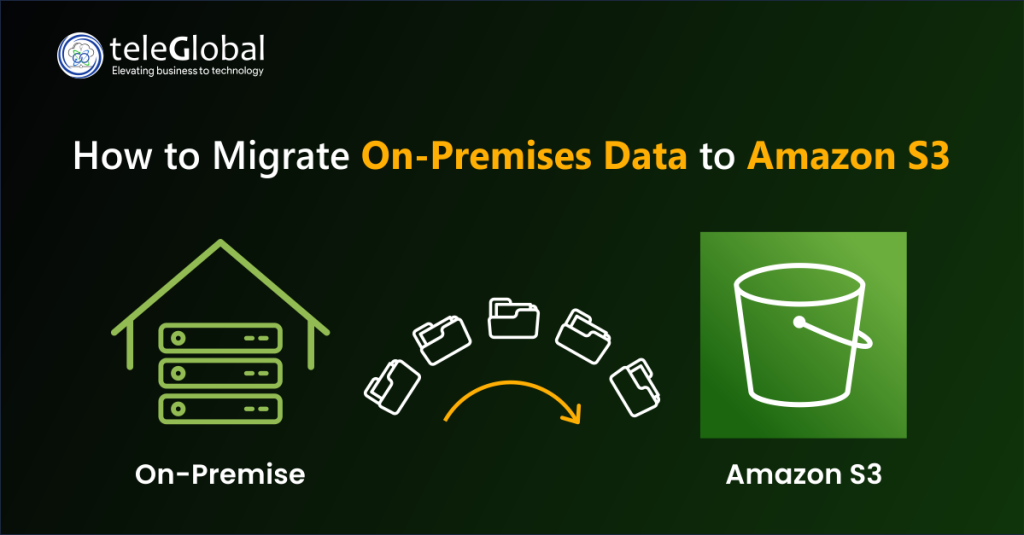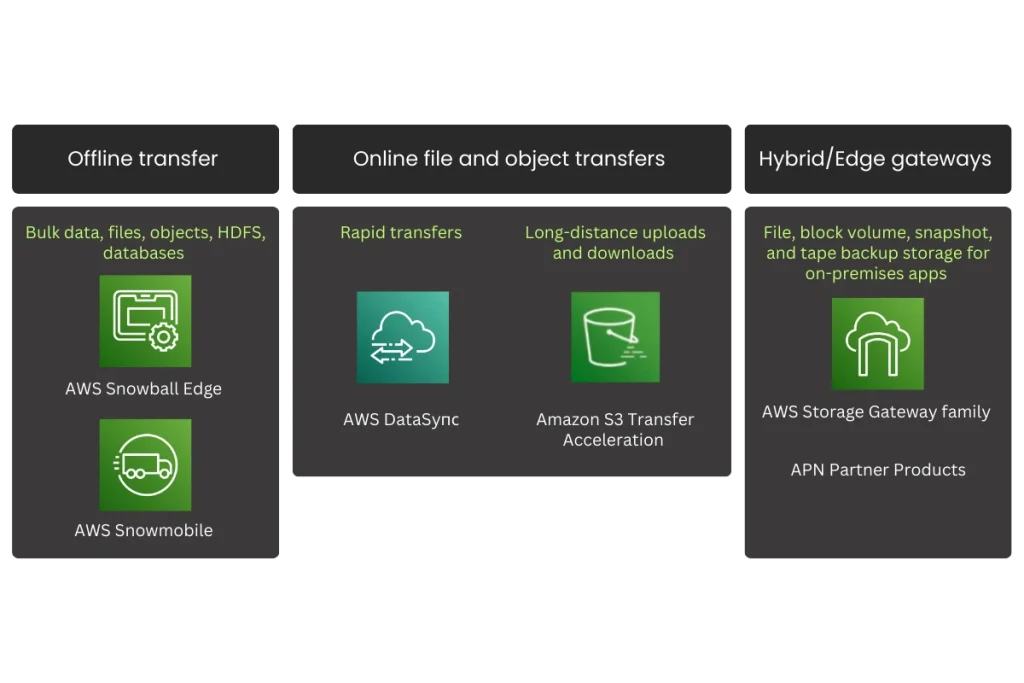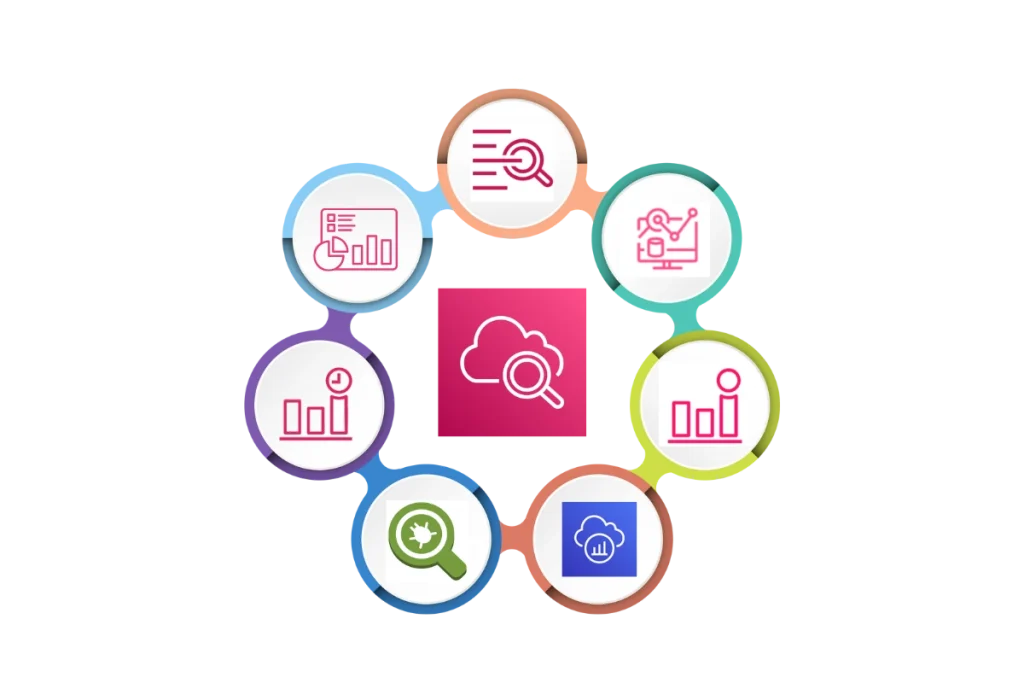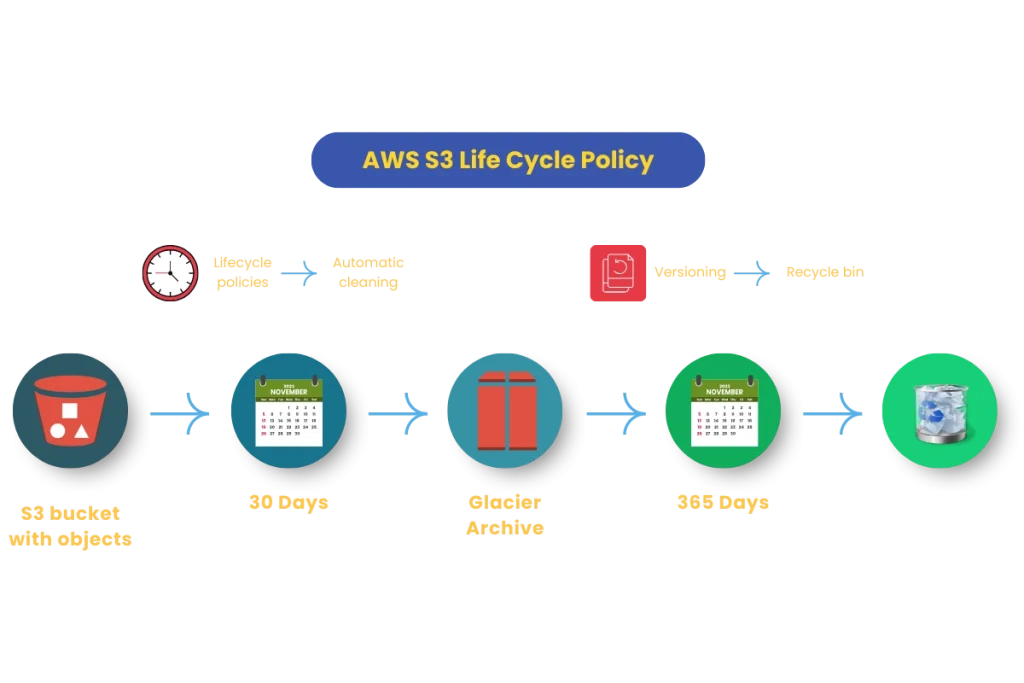
| Author: Ashish Kumar | Published: 14-Jun-2024 |
Imagine a world where your data is always available, effortlessly scalable, and securely stored in the cloud. That’s exactly what migrating to Amazon S3 can deliver. Amazon S3 (Simple Storage Service) is a popular cloud storage service that offers an easy-to-use interface and robust features for managing data at scale. Migrating on-premises data to Amazon S3 can help organizations leverage the scalability, durability, and cost-efficiency of the cloud. Whether you are looking to offload backups, archive data, or improve data accessibility for global teams, migrating data to S3 is a straightforward process, but it requires careful planning. This blog will walk you through the necessary procedures for moving data from on-premises systems to Amazon S3.

Before you begin migrating your data to Amazon S3, it’s important to assess your data storage requirements. Some key factors to consider are:
Evaluate the volume of data you need to migrate. Is it a few terabytes or petabytes? This will determine the methods and tools you select.
Understand the nature of your data-whether it’s structured, unstructured, or multimedia files, as different types of data may benefit from different storage classes or organization strategies.
Define how long you intend to store your data and how frequently you need to access it. This helps determine not only cost but also data management features such as versioning, logging, or access control.
Amazon S3 offers multiple storage classes, each designed for different use cases. Selecting the appropriate class can help you optimize both costs and performance.
Depending on your needs, you should determine which storage class aligns with your data’s usage patterns and retention requirements.

| S3 Bucket | S3 Intelligent Tiering | S3 Glacier | S3 Glacier Deep Archive |
|---|---|---|---|
| Active, frequently accessed data Milliseconds access >3 AZ | Data with changing access patterns Milliseconds Access >3 AZ Monitoring fee per object Min Storage duration | Archive data Select minutes or hours >3 AZ Retrieval fee per GB Min storage duration Min object size | Long term archive Select hours >3 AZ Retrieval fee per GB Min storage duration Min object size |
The next step in the migration process is deciding on the best strategy for transferring your data to Amazon S3. There are several methods, each suited for different types of data and organizational needs:

When migrating sensitive data to Amazon S3, security and compliance must be a top priority. Here are some steps to ensure your data is protected:
Use Amazon S3’s built-in encryption options to protect your data at rest and in transit. You can enable server-side encryption (SSE) with options like SSE-S3, SSE-KMS, or SSE-C, depending on your encryption needs.
Implement fine-grained access controls using AWS Identity and Access Management (IAM) policies, bucket policies, and Access Control Lists (ACLs) to specify which users and services can access your data, ensuring only authorized entities have permission.
If your industry has specific compliance requirements (e.g., HIPAA, GDPR), ensure that you configure your S3 buckets according to those standards. Amazon S3 offers several features to help meet these regulatory requirements, such as versioning, logging, and data retention policies.
Once you’ve set up the right tools and security measures, you can begin the migration process. During the transfer, it’s crucial to:
AWS provides tools like CloudWatch to monitor the status and health of your data transfer. This helps you ensure the migration is proceeding smoothly and allows for troubleshooting if issues arise.
Perform data validation checks post-migration to ensure no data was corrupted or lost during the transfer.

After the migration is complete, there are several optimization steps to consider:
Set up Amazon S3 lifecycle policies to automatically transition data to the appropriate storage class based on age or access frequency, helping you optimize costs over time.
Enable versioning in S3 to maintain previous versions of files, ensuring data durability and recovery options.
If you have an ongoing need to transfer data, consider automating the process with AWS DataSync, AWS Lambda, or other AWS tools.

AWS S3 Life Cycle Policy
S3 bucket with objects -> 30 Days -> Glacier -> 365 Days -> Archive
Migrating your on-premises data to Amazon S3 isn’t just a technical upgrade, it’s a strategic move toward a more agile, scalable, and future-ready infrastructure. Migrating on-premises data to Amazon S3 can streamline your storage infrastructure, empower your business with unmatched durability, flexibility, and cost efficiency. By thoughtfully planning your migration, carefully assessing your needs, choosing the right tools, and implementing robust security and compliance measures, you can ensure a smooth transition to the cloud. Whether you’re moving a small batch of files or petabytes of data, Amazon S3 offers a flexible and reliable solution to manage your data for years to come.
Ready to take the leap? Let S3 handle the storage, so you can focus on what matters most: innovating, scaling, and staying ahead.
 close
close

Hi there! At TeleGlobal, we turn your cloud vision into AI-accelerated reality. What challenge can we help you solve?
Powered by ![]() teleBot
teleBot